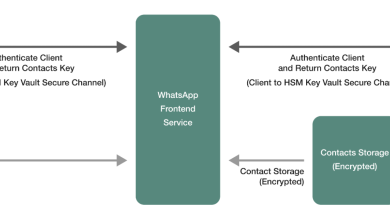Understanding YouTube Engagement Rate In 2024 [Plus 10 Tips On How To Improve It]
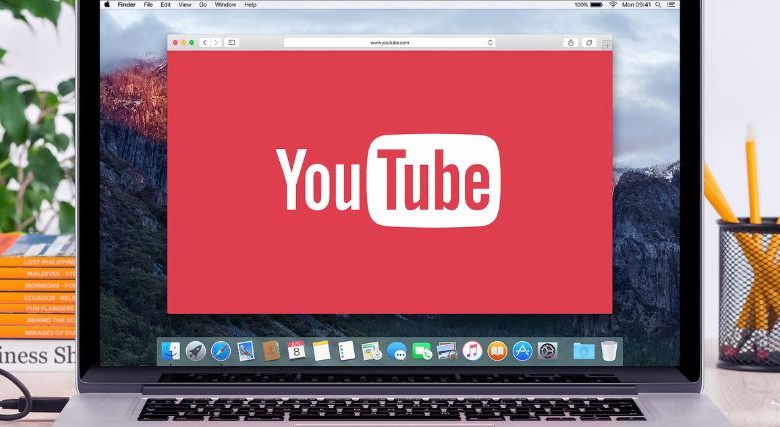
A high YouTube engagement rate is extremely valuable in today’s digital world. After all, YouTube boasts more than 2 billion monthly users, making it the second most popular website and search engine worldwide. An active presence on this video-focused channel gives you an opportunity to capture the attention of countless customers, many of which spend hours on YouTube every day.
However, simply having a YouTube channel isn’t enough to drive real results. The return on investment you earn from your strategy all depends on your engagement rate.
Its engagement on YouTube builds relationships with your target audience, gives you access to useful insights, and drives sales. It’s also what determines how visible your company will be on the popular channel, as engagement is one of the key factors influencing YouTube’s algorithm.
Today, I’m going to share YouTube expert tips about YouTube engagement, from how to calculate your engagement rate to the best things you can do to improve it.
What is YouTube Engagement Rate?
Your YouTube engagement rate is measure of how many people are interacting with your content on the channel. It looks at everything from how many people watch your videos (and for how long), to your number of likes, dislikes, comments, subscribes/unsubscribes, and video shares.
Essentially, your engagement rate is what tells you whether people are actually connecting with your videos, and using them to learn more about your brand. It’s similar to the engagement rate metric on any social media channel, or website.
What’s the Average YouTube Engagement Rate?
So, what’s the average YouTube engagement rate? The simple answer is it’s difficult to tell. Ultimately, your engagement rate will depend on a lot of factors, from the kind of content you produce to the audience you target and even your niche.
For instance, gaming videos have an average “like-to-view” engagement rate of around 5.47%. Music videos, on the other hand, gain more viewers but rarely earn a lot of likes and comments. YouTube engagement can also vary depending on the number of subscribers you have.
For instance, according to Statista, the average engagement rate for channels with fewer than 15,000 subscribers is around 1.63%.
Why is YouTube Engagement Important?
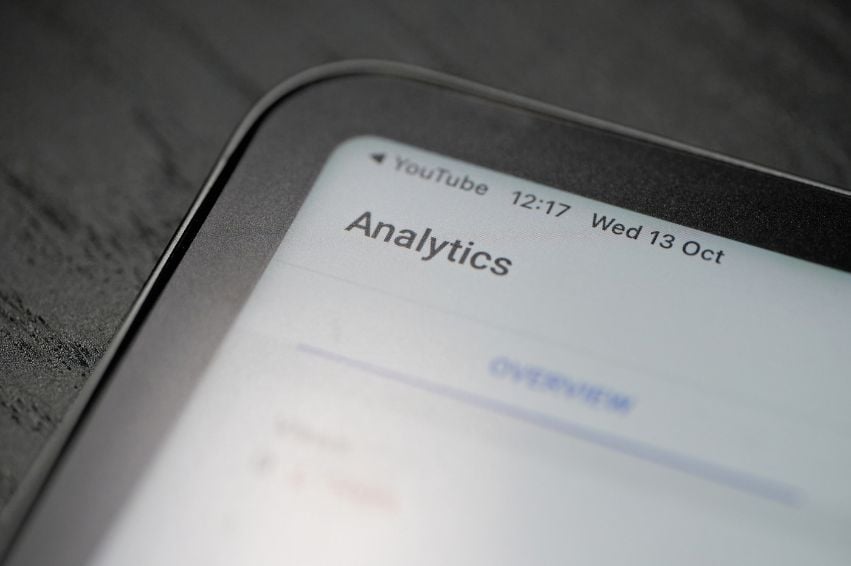
Ultimately, engagement is one of the most important metrics to track for any marketing campaign. In every channel, engagement signifies whether customers are actually interacting with your content. Higher levels of engagement lead to better customer relationships and more sales.
Monitoring your YouTube engagement rate also helps you learn more about your target audience. It gives you a clear insight into what kind of content they want you to share, how they learn about your products, and even what they think about your brand (through comments and interactions).
Additionally, YouTube engagement determines how visible your videos will be on the platform. YouTube’s algorithm for recommendations is what drives 70% of what people actually watch on the platform. To determine which videos it should recommend to each user, YouTube leverages an algorithm that looks at various factors, from “relevance”, to video quality and user search history.
One of the most significant factors influencing this algorithm is engagement. YouTube determines which videos customers are likely to enjoy based on the videos they’ve enjoyed previously, how many of your videos people are watching, and how often they interact with your posts.
In other words, even if you produce fantastic videos, if you’re not earning enough engagement, you’ll struggle to stand out among the millions of other videos uploaded to the platform.
How to Measure Your YouTube Engagement Rate
The importance of engagement as a crucial metric for YouTube’s success has prompted many developers to design tools that can help you track and measure your own engagement rate. There are plenty of free solutions out there that can analyze the number of likes, comments, and shares a video gets for you, giving you a clear engagement rate number.
However it’s also reasonably easy to calculate engagement rate for yourself, using the analytical tools you’ll have as a content creator on the platform.
The formula for calculating the engagement rate looks like this:
Engagement rate percentage = Total interactions / Total Impressions x 100
To find your number, start with the total number of interactions your video has received. Interactions on YouTube include everything from views, shares, likes, and dislikes to comments and new or lost subscribers. If that gives you too much to keep track of, you can simply look at key interactions like comments, likes, and shares.
Once you have your total number of interactions, you’ll need to divide it by your total number of impressions. Basically, this is the number of people who see your video thumbnail on YouTube. You can find this number by going to the “Reach” tab in the analytics section of your YouTube account.
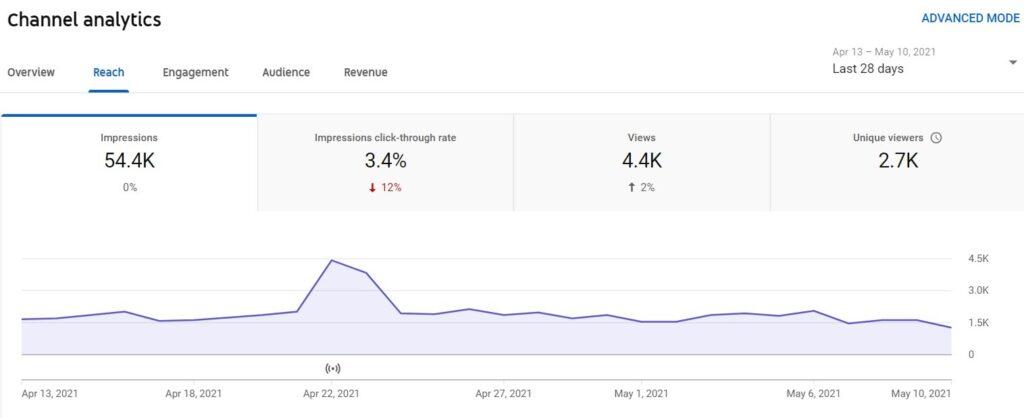
Here, you’ll also see information about your click-through rate, unique viewers, and total views.
Finally, take the number you get by dividing your total interactions by total impressions and multiply it by 100 to get your engagement rate. For instance:
5000 Interactions / 100,000 impressions x 100 = 5%.
10 Tips to Improve Your YouTube Engagement Rate
Now that you have a clear view of your current YouTube engagement rate, you can begin experimenting with strategies to improve it. I should note that there’s no “secret strategy” to ensuring your YouTube channel is a success. However, there are certain practices the top channels follow to boost their chances of collecting more views and interactions.
Here are some of the top strategies recommended by YouTube analysts, YouTube’s own best practices guidelines, and leading channel hosts.
1. Find Out What Viewers Want to See
This is one of the most important ways to boost YouTube engagement, but it’s a tip a lot of companies frequently overlook. Ultimately, any type of content you produce will perform better if it’s tailored to the specific interests and preferences of your target audience.
The more you know about your customers, the questions they’re asking about your business, and the pain points they’re trying to address, the more you can create valuable content. To learn more about what your customers want to see on your YouTube channel:
- Analyze the competition: Look at what other companies in your niche are publishing on YouTube. Pay attention to the keywords and topics they’re targeting and which videos are driving the most likes, comments, and shares.
- Examine your analytics: If you already have an active YouTube channel, you should be able to dive into your YouTube analytics page to learn more about the videos that gain the most engagement. Pay attention to the number of views (and the time spent watching each video), as well as likes, dislikes, comments, and other factors.
- Interact with your audience: Actually interacting with your customers, either through YouTube’s Community tab, reading comments, or hosting conversations on social media channels can give you some great content creation ideas. Consider answering frequently asked questions in a new video, or host polls and ask people to vote on what they want to see.
It’s also worth paying attention to the trending topics that are gaining the most attention in your industry. For instance, as AI tools started to emerge as a valuable resource for email marketers in 2024, MailChimp took the opportunity to create videos about using AI to write email content.
2. Prioritize Interactions with Your Audience
Interaction is just another word for engagement. If you want your customers to engage with you on YouTube, you need to move beyond looking at it as a platform for one-way content distribution. YouTube might not be exactly the same as other social media platforms, but it’s still a social environment, where people are encouraged to connect and share ideas.
Start by thinking about how you create your content. Videos that make it seem like you’re actually speaking to your target audience rather than just bombarding them with information can be a lot more engaging. Consider asking questions regularly throughout each video, like Sara Dietschy does.
Other ways to interact with customers on YouTube include more effectively:
- Using the Community tab: The Community Tab allows you to interact with your audience on YouTube through regular posts. You can share polls, quizzes, images, text, and GIFs, creating a much more consistent conversation with your target audience. Plus, you can use it as an environment to inform users about your latest videos.
- Respond to comments: One of the most obvious ways to interact with viewers on YouTube is to enable comments on your videos and actually respond to them. YouTube should show you your most recent comments in your analytics dashboard, giving you an opportunity to respond to them rapidly without leaving the page.
- Host live video sessions: Use live streams on YouTube to interact with your customers in real time. You can use these sessions to answer common questions, ask your customers about their preferences, and gather valuable data for future video campaigns.
3. Boost YouTube Engagement with Cross-Promotion
A lot of the work you’ll do to improve your YouTube engagement rate will take place on the video platform itself. However, you can also significantly increase your reach and improve the ROI of your videos by leveraging additional promotional channels.
Cross-promotion is one of the most effective growth strategies for any business. It ensures you can drive traffic from other platforms back to your YouTube page, where you can encourage them to subscribe to your content and check out additional videos.
These days, you can add your YouTube videos to virtually every channel you use for marketing. If you have a newsletter, use your email marketing automation tool to embed clips of your latest videos into your emails, or consider adding a link to your YouTube channel in your footer.
If you’re using social media channels for promotional purposes, regularly include YouTube videos in your social content calendar. For instance, HubSpot often promotes videos from YouTube, as well as Reels from Instagram on their Facebook page:
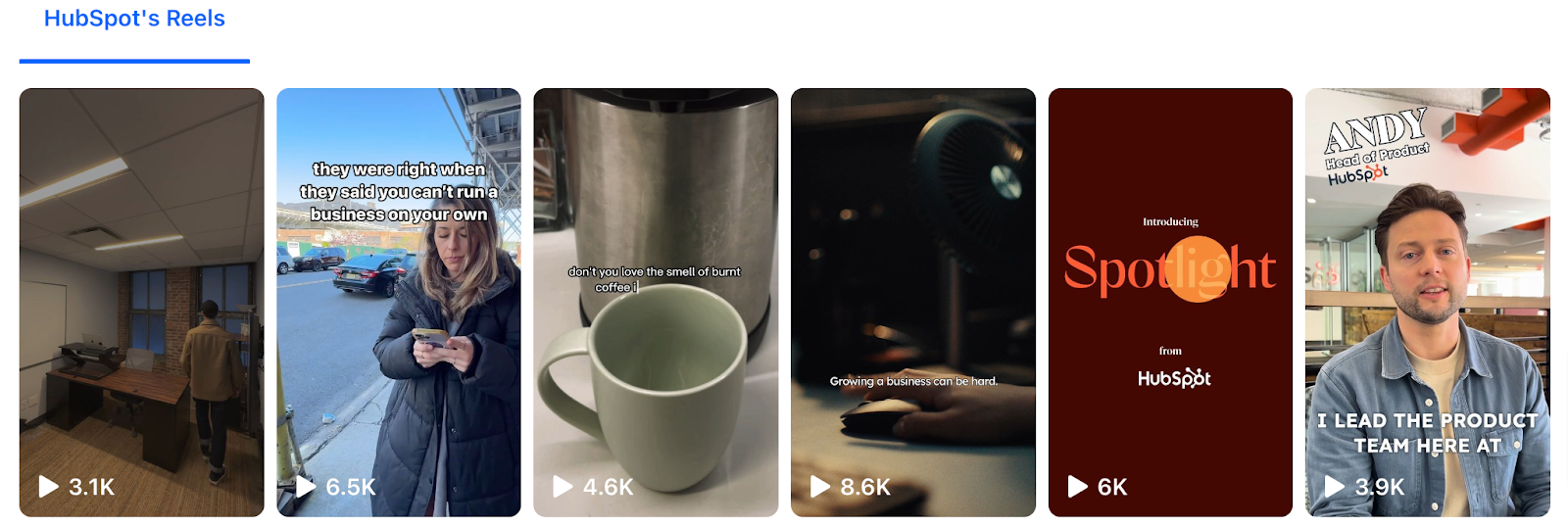
You can even include a link to your YouTube channel in your social media bios or Link pages (if you’re using link-in-bio tools for channels like Instagram).
Additionally, make sure you’re taking advantage of opportunities to showcase your videos on your website. You could add a social stream to your website, where people can check out all of your latest videos in one place. Alternatively, you might embed relevant YouTube videos into your blog posts, articles, and landing pages.
YouTube will help you track the success of your cross-promotional efforts in the “External Sites and Apps” reports for each video. This should help you figure out which third-party channels are driving the most attention back to your video profile.
4. Collaborate with Other Channels and Creators
If your YouTube engagement rate is struggling, one of the best ways to improve it is to tap into the audiences of other well-known creators and brands. Collaborating with other companies or content creators can help boost engagement in a variety of different ways.
First, if you create a video with someone else, that automatically doubles the number of people you have promoting that content. You can share your video on your YouTube channel, as well as all of the other promotional platforms I mentioned above. At the same time, you’ll have someone else focused on driving attention to the same video from their social profiles.
This gives you instant exposure to a new but still highly targeted audience who might not yet be aware of your brand. Secondly, working with influencers and well-known creators can boost the credibility of your brand, increasing the chances that customers will actually want to interact with you. For instance, Kajabi partnered with a well-known entrepreneur, Amy Portfield, on a video that shares valuable advice for other business leaders.
This video gives customers a unique perspective of the platform from a reputable figure and also inspires trust in Kajabi’s product.
Just remember, when deciding who you’re going to partner with, it’s important to ensure you’re choosing a creator or brand with a similar target audience to yours. However, you don’t want to work with any company that’s competing against you with a similar product or service.
5. Create More Content for YouTube Shorts
To boost your chances of high engagement on YouTube, you should be creating all kinds of content, including live streams, sequential videos, and one-off posts. However, one of the best types of videos to invest in for greater YouTube engagement is Shorts.
YouTube Shorts amasses tens of billions of views every day, primarily attracting the attention of younger generations in love with TikTok and Instagram Reels.
YouTube Shorts boost your engagement rates by giving you lots of fresh, interesting, and fast-paced content you can use to interact with customers. It also gives you a good way to give different types of audiences various forms of content to experiment with.
Not everyone who visits your YouTube profile will have the time to watch a lengthy 20-minute video, but they’ll usually be happy to learn more about your brand from a few fast-paced clips.
YouTube Shorts are easy to create because, like TikTok videos, customers expect them to be simple, fast-paced, and authentic. They’re also a great way to repurpose some of the content you already have. You can split longer videos into Shorts or create Shorts based on the content assets you already have, like blog posts and case studies. Here’s an example from HubSpot:

Remember to take advantage of your cross-promotional strategy here, too. You can cross-post vertical videos from YouTube on Instagram, TikTok, and Facebook, and vice versa.
6. Experiment with Different Types of Video Content
Ultimately, you’ll never know what’s going to improve your YouTube engagement rate until you start experimenting with different types of content. You might assume that “how to” videos and tutorials will get the most attention. However, if you don’t explore other strategies, like review and reaction style content or product comparisons, you won’t have the data to back up your beliefs.
Experimenting with different kinds of content ensures you can learn more about what types of videos your customers want most. Plus, it’s a great way to make sure your YouTube content calendar remains fresh and interesting. Customers can quickly get bored of a channel if it seems to produce the same stuff all the time.
Create a content calendar that encourages you to experiment with:
- Interaction-focused content: Interaction-focused content is a great way to increase engagement. Q&A sessions hosted over live streams, as well as competitions, contests, and giveaways give you an excellent way to interact with your community on a consistent basis. These types of content will also help you learn more about your audience.
- Purpose-focused content: Purpose-focused content includes all of the videos you produce to address a specific point in a customer’s journey with your brand. This might include product demo videos, how-to content, unboxing and review videos, comparison videos, and even tutorials that show customers how to use items and features.
- Trend-focused content: Trend-focused content is the videos you’ll produce to align with current trends in your industry. These are the “fresh,” relevant videos that you create to align with customer interests at the moment.

With all the content you produce, make sure you’re still gearing your videos towards your specific target audience and giving them an equal blend of entertainment and education.
7. Boost YouTube Engagement with Titles and Thumbnails
To encourage customers to engage with your content on YouTube and your brand, you first need to convince them to click on your videos. One of the first things you’ll need to accomplish this is an exceptional title. Similar to a subject line in your email marketing campaigns, your video title should give customers a clear idea of what to expect from your video and engage their curiosity.
YouTube titles need to be action-focused, succinct, and straight to the point. They should also include the keywords your customers are likely to be searching for on the channel.
Beyond your title, the other key thing that inspires higher click-through rates and better YouTube engagement is your video thumbnail. Studies show that not only do 90% of the top-performing videos on YouTube use custom thumbnails, but these thumbnails also increase engagement by up to 154%. Like your title, your thumbnail should tell your customers what your video is about.
It should grab their attention and tell them exactly why they want to watch your content. Most effective thumbnails will include:
- Text to outline the topic of the video
- Creative graphics to draw attention
- Insights into your unique brand style
Here’s an example of how Buffer uses custom thumbnails to create a cohesive branded experience for all of its educational videos:

You don’t necessarily need a graphic designer to create custom thumbnails, either. Tools like Canva allow you to leverage pre-built templates you can use every time you upload a new video.
8. Use Editing Strategies to Retain Audience Attention
Customer attention spans aren’t actually disappearing in the digital age. However people do get bored and distracted a lot faster these days. After all, there are so many things competing for our attention at any given time, it’s hard to focus on one video for a long period of time.
That’s often why it’s a good idea to keep your YouTube videos short, or leverage strategies that help you to retain your customer’s attention.
The most popular YouTube videos take advantage of editing techniques and liberal cuts to eliminate as much fluff as possible. Just check out this video from Ali Abdaal for a good example.
To make sure that your videos don’t just capture but keep your customer’s attention:
- Script them in advance: Write a comprehensive script outlining the key points you’re going to cover in your video, and how long you should be talking about each topic. This will help to prevent you from rambling or going off on a tangent.
- Edit your videos professionally: Edit your videos carefully, removing any content that’s unnecessary or not valuable to your audience. Implement graphics, screen transitions, and other elements to keep it interesting.
- Use the chapters feature: Use the chapters feature or the “time stamps” capability within YouTube to help customers keep track of everything that’s happening in your video. The chapter’s feature also allows users to rapidly jump to the point in your video that’s most valuable to them.
It’s also worth paying attention to your videos to track when customers are most likely to lose interest in what they’re watching. This can help you to refine your future editing strategies.
9. Optimize Your YouTube Video SEO
Since YouTube is owned by Google, you’d think everyone would be investing plenty of time and effort into “optimizing” their videos for search engine algorithms. However, it’s amazing how many companies don’t take this crucial step.
Optimizing your YouTube SEO is an excellent, and quick way to improve your chances of attracting audiences to your content, and increasing engagement. The first, and most obvious way to get started is by embedding the right keywords into your content. Research the terms customers are looking for, and use a tool like SEMRush to identify high volume, low-competition keywords.
Then, embed those keywords (and semantic alternatives) into your YouTube video titles, your descriptions, and even the captions you generate for your audience.
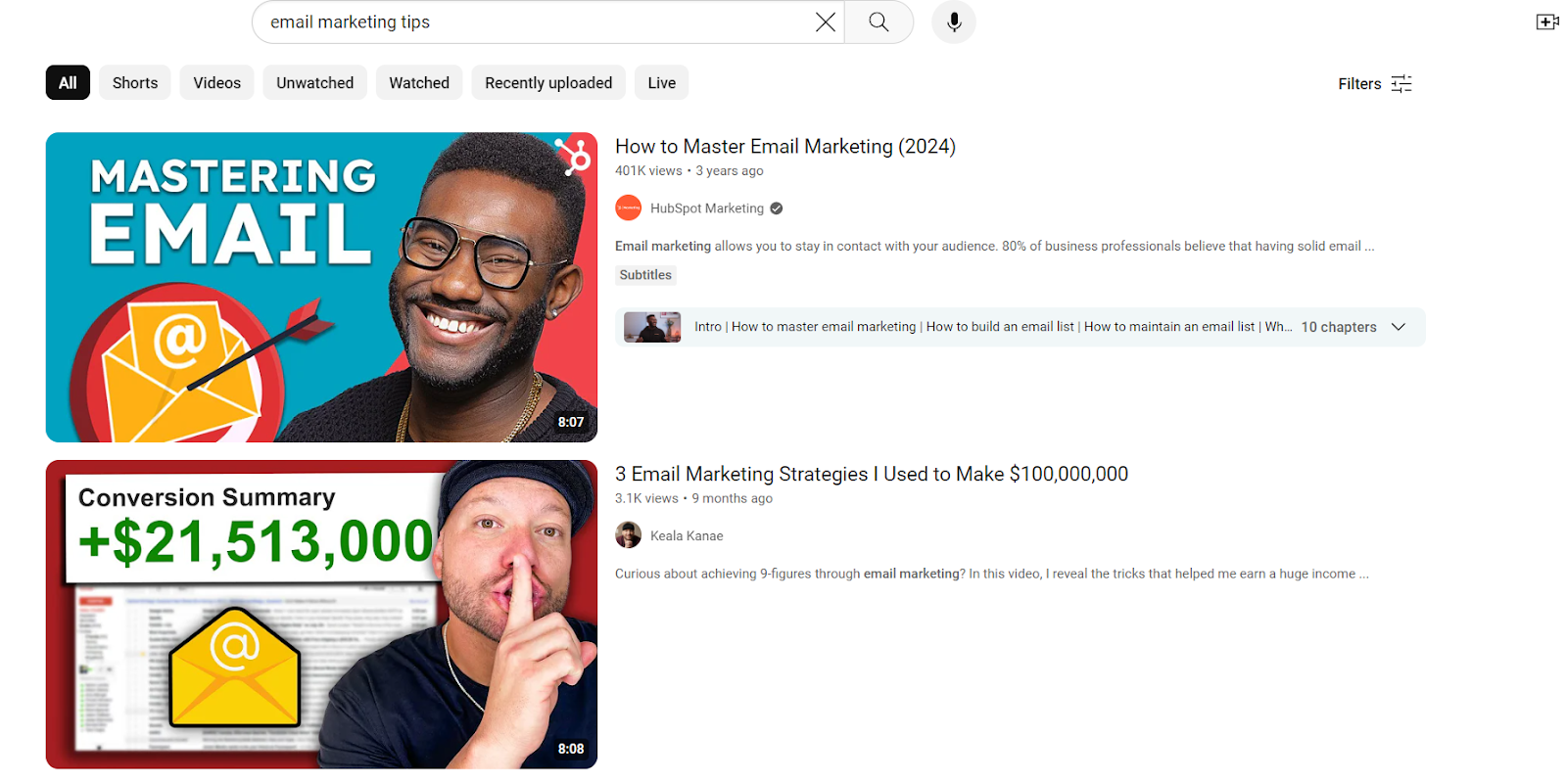
Other ways to boost your chances of YouTube engagement with SEO include:
- Leveraging hashtags in your video descriptions.
- Categorizing your videos and using links in the description to reference relevant content.
- Using subtitles and caption options to increase your use of keywords.
- Pointing traffic to your videos from other sources (cross-promoting).
- Using analytics to track valuable keywords and topics
Like any form of SEO, YouTube SEO requires an ongoing strategy. You’ll need to commit to regularly experimenting and refining your efforts over time. However, even the smallest changes can make a big difference in the long term.
10. Use End Screens, Clear CTAs, and Internal Links
Boosting your YouTube engagement rate doesn’t just mean looking for ways to increase how many people view and interact with specific videos on your channel. You should be looking for ways to encourage people to interact with as much of your content as possible.
One of the best ways to do this is to take advantage of YouTube’s clickable “end screen” options. This gives you an opportunity to drive viewers to additional videos, your website, or specific landing pages with a clear “CTA” (Call to Action) at the end of each video.
You can use end screens to:
- Prompt customers to subscribe to your channel (meaning they’ll get alerts whenever you post a new video, driving them back to your content).
- Direct customers to a relevant playlist or another video linked to the same topic.
- Drive customers to your website, a specific landing page, or a product.
- Promote an offer or generate leads with a lead magnet.
- Link to your other social media pages
You can also boost your overall chances of engagement by including a clear call to action in each video. Ask people to subscribe to your channel, tell them why they should go to your website, download your latest eBook, or take advantage of a great product deal.
You can even add links and resources to your video description that encourage further engagement. For instance, look at how Neil Patel links to other videos, valuable tools, and social media channels in each of his video descriptions:

Bonus Tip: Elevate YouTube Engagement with Technology
Finally, before I sign off, I have one last bonus tip to share that will make boosting your YouTube engagement rate with all of these strategies a lot easier: use the right technology. Innovative technology can help optimize your YouTube marketing strategy in a range of ways. For instance, you can use:
- AI tools: To help you generate compelling captions, video descriptions, scripts, and titles for your YouTube content. You might even use AI-powered search engine optimization tools to help you identify the right keywords and topics to create videos around. AI tools can also help you track trends and give you ideas on what types of content customers are looking for.
- Scheduling tools: Scheduling tools and content calendars help to ensure you’re constantly promoting fresh content on your YouTube channel. To feed the YouTube algorithm, you need to be regularly producing new content in various forms to delight your audience. Create a calendar that’s filled with different types of videos, live streams, and YouTube Shorts.
- Analytical tools: While YouTube already has its own analytical tools available, third-party solutions can give you far more in-depth insights. Companies like HootSuite and Sprout Social offer access to tools that can help you understand which factors affect your YouTube engagement rate, boosting your chances of better results.
Plus there are various other forms of technology that can enhance your YouTube marketing strategy too. You can use project management timesheets and tools to work with freelancers on content creation, or plan collaborative campaigns. Alternatively, email marketing and social media automation tools will assist you with cross-promoting your YouTube content.
Optimize Your YouTube Engagement Rate
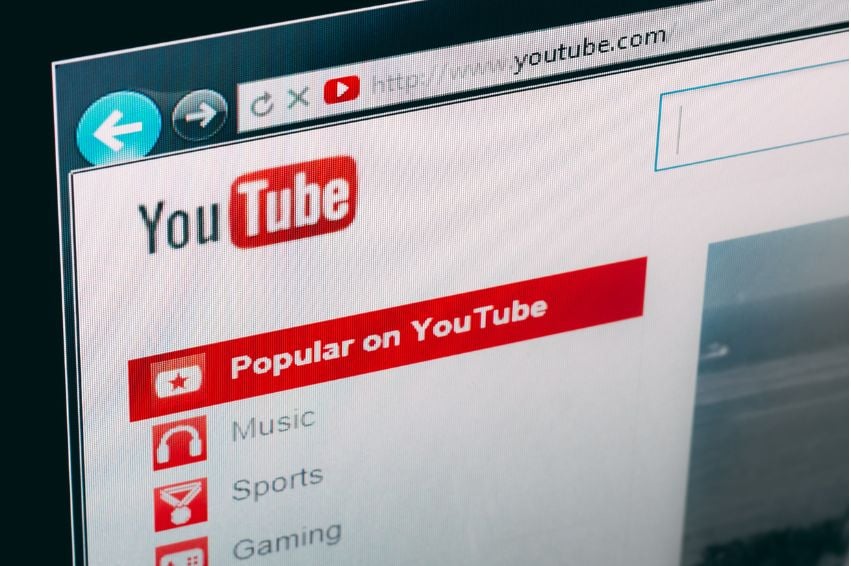
YouTube is one of the most powerful promotional channels any company can access in today’s world. Not only is it among the most popular websites worldwide, but it boasts incredible opportunities to engage with your target audience, build powerful relationships, and increase sales.
Unfortunately, while anyone can create a YouTube channel, ensuring that the channel drives consistent engagement and results can be challenging, the tips above should ensure that you have the strategy you need to boost your YouTube engagement rate and keep it high in the years ahead.
However, if you need additional support and guidance, working with a YouTube expert could be a good idea. Reach out to Toptal to learn how we can match you with a YouTube specialist to help with everything from video editing, to YouTube SEO.
FAQ
What is considered engagement on YouTube?
Engagement on YouTube is any form of interaction between a consumer and your video. Forms of engagement include views, comments, likes, dislikes, subscriptions, unsubscribes, and shares. These metrics provide useful insight into the value of your channel.
What is a good engagement rate on YouTube?
The average YouTube engagement rate varies depending on your industry, niche, and number of followers. Most experts agree that an engagement rate of 3.5% and above is good for companies with a limited following. However, for a larger following, your engagement rate may be closer to 1.5%.
Does engagement matter on YouTube?
Engagement on YouTube is crucial to generating a positive return on investment from your video marketing strategy. Engagement is what builds customer relationships, drives sales, and boosts your visibility on YouTube by influencing the YouTube algorithm.
Is engagement better than views on YouTube?
Views are an important measure of engagement on YouTube, but they’re not the only thing you should pay attention to. Interactions like likes, comments, shares, and subscriptions can be more valuable to your YouTube strategy overall.
Do hashtags increase engagement on YouTube?
Hashtags can help to improve engagement on YouTube when used as part of your video descriptions. They can help relevant customers to find your content. However, it’s important to choose your hashtags carefully.



